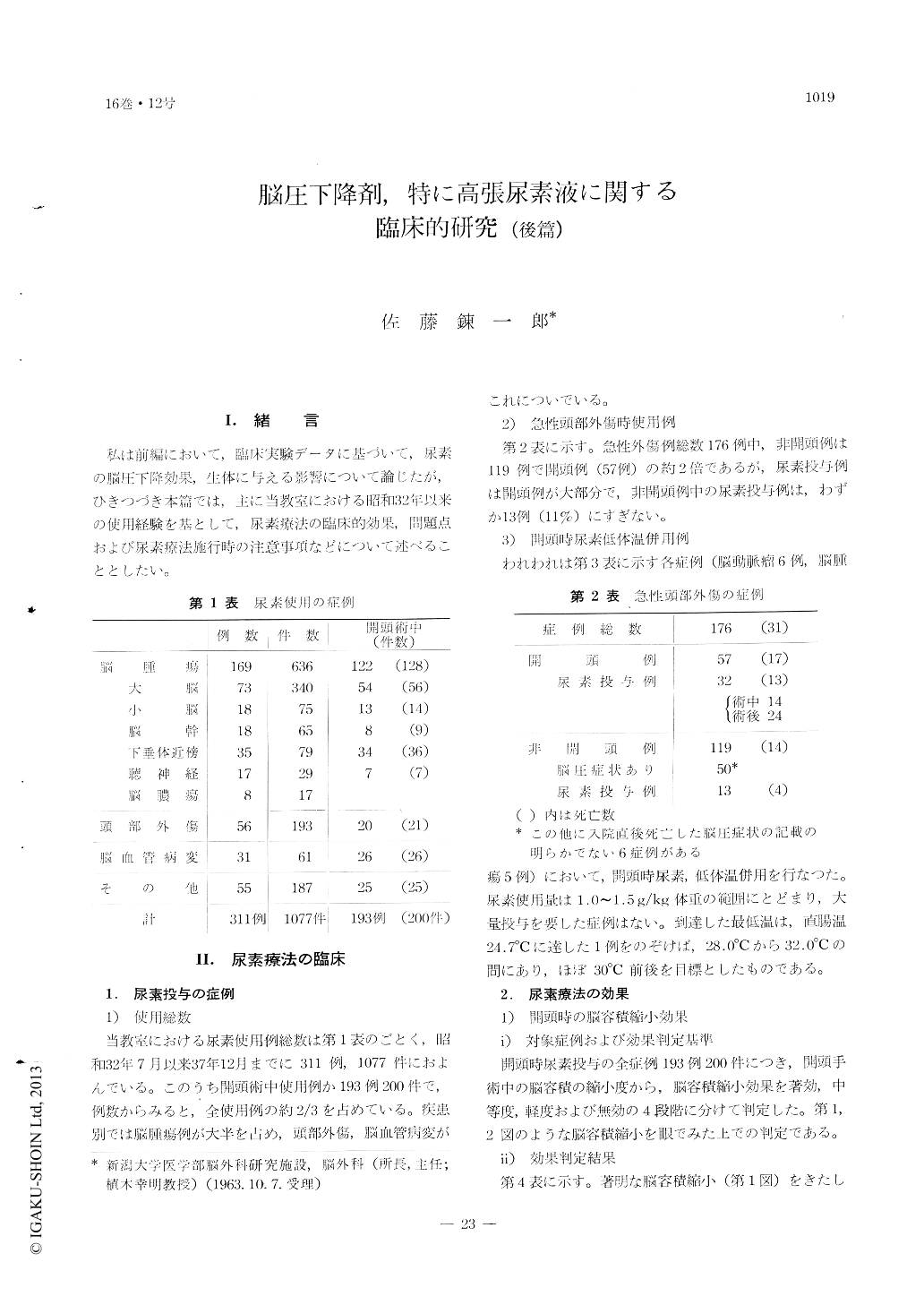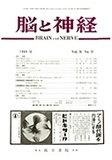Japanese
English
- 有料閲覧
- Abstract 文献概要
- 1ページ目 Look Inside
I.緒言
私は前編において,臨床実験データに基づいて,尿素の脳圧下降効果,生体に与える影響について論じたが,ひきつづき本篇では,主に当教室における昭和32年以来の使用経験を基として,尿素療法の臨床的効果,問題点および尿素療法施行時の注意事項などについて述べることとしたい。
This is the discussion about clinical application of hypertonic urea solution in our clinic.
1) We administered hypertonic urea solution in 1077 cases in 311 patients (luring the period of July 1957 to December 1962. Moderate or marked reduc-tion in brain bulk was achieved in 92.5% of cranio-tomy cases (200 cases in 193 patients). The more the dosis was given per kg of body weight, the better was the result and shrinkage of the brain was more prominent on the cases with no cerebral edema than the one with it and also the cerebral edema resulted from supratentorial tumor was more sensi-tive to urea administration. Moderately or markedly advanced hydrocephalus was encountered in half of cases in which brain bulk reduced only slightly. Although hypothermia is considered to decrease in-tracranial pressure, hypothermia combined with the administration of urea effected much more decrease in intracranial pressure. In non-craniotomy cases the effects of tira solution were represented as disap-pearance of symptomes, reduction in intracranial pressure, disapperance of bulge, improved EEG findings and disappearance of papillocdema.
2) In most of non-craniotomy cases with acute-head injury urea administration was usually started within 48 hours or 8 days after injury, urea was. administered four times succeedingly and usually more administration was not necessary. On urea administration in the cases of acute head injury intracranial hemorrhage should be ruled out.
3) Side-effect of urea therapy was studied in 151 patients and no severe one was observed. No patient succumbed to death in a single administration of large dosis or continued administration of urea.
4) In cases in which urea administration was. followed by 5% dextrose, the effective duration was same.
5) Rebound phenomenon after urea administra-tion was seen in 16 of 18 cases and the extent of rebound phenomenon tends to parallel to initial intracranial hypertension.
6) The practical application and suggestions of urea therapy, its mechanism and ideal hypertonic agents were discussed.

Copyright © 1964, Igaku-Shoin Ltd. All rights reserved.


